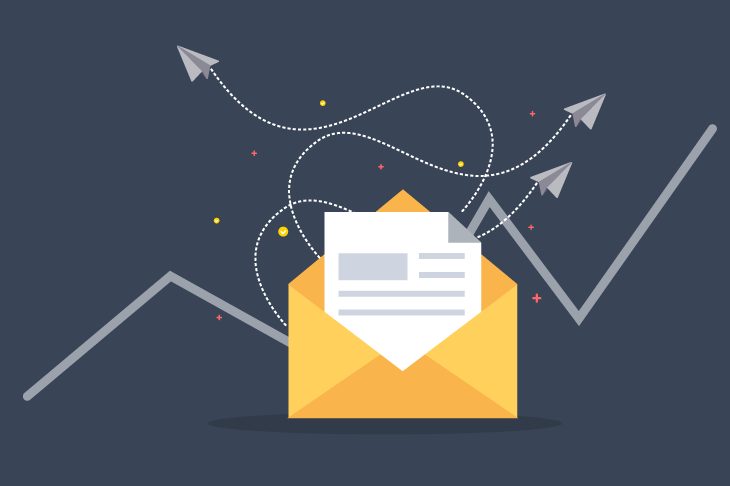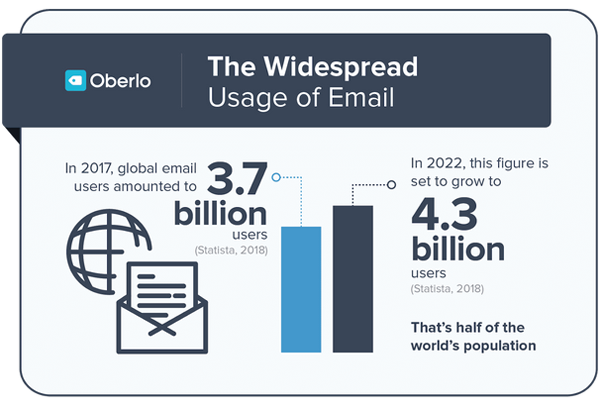
There are hordes of digital marketing techniques available today to promote your business and you are turning to every one of those tactics to pitch your company out there. But before other marketing methods became famous, email marketing was the much-preferred technique. And it still is, if done with the appropriate strategy.
It’s a simple thought process that everyone has at least one email account to handle their communication. Even though people rarely use emails for personal interaction these days, the fact still remains that we use the medium almost on a daily basis. This is where we highly recommend email marketing; to reach out to potential customers and to retain the existing ones.

3 amazing benefits of using email marketing for your business
1. It is easily accessible
Everyone has a smartphone and at least one active email account on it. So, share a well-designed email with a great message and you are likely to get the appropriate action you desire from your recipient.
2. It is a cost-effective solution
Millions of dollars are spent on digital and traditional marketing techniques. However, when it comes to email marketing, it’s a cost-effective solution. If you are a small business with limited resources, email marketing might just be the best solution for you. It’ll be a lot lighter on your pocket compared to other marketing activities.
3. It gives a better Return on Investment (ROI)
Research shows that email marketing has one of the best ROI over any other marketing technique; with a $42 return on every $1 spent. However, it’s not only about sending out emails. You should also know how to measure your ROI.
The basic formula to calculate ROI is:
(Sales Growth – Marketing Cost) / Marketing Cost = ROI
For example, if your sales grew by $1,000 and your overall marketing cost was $100, then your ROI is 900%.
(($1000-$100) / $100) = 900%
Often a great email marketing campaign delivers good open rates, however, businesses still don’t see much traction on their websites or an increase in sales. This usually boils down to the click-through rate (CTR).
What is CTR and why should you monitor it?
One of the biggest challenges marketers face is to get consumers to click on the emails and take the desired action. This is known as CTR. Here’s a simple formula to calculate your CTR:
Email CTR = # of clicks/ # of delivered emails x 100
Using this formula will help you calculate your CTR and will also highlight the bits where your campaign is going wrong. It could be about not having the right audience for the product or maybe your call-to-action needs revision. Whatever may be the reason, it’ll help you tweak your campaigns for maximum returns.
Apart from ROI and CTR, your campaign’s success also depends on how they’re viewed on a particular device. If you have received an email on your phone which isn’t optimized for the screen, you may end up in the trash.
Fun Fact: If an email is read on mobile and then read for a second time on desktop, that consumer has a 65% higher likelihood of clicking through.
1. Set clear and measurable goals
While planning a campaign, it’s imperative you know what your goals are. This will help you build a result-oriented strategy. It could be to increase sales, get more website clicks, engage loyal customers, more sign-ups or perhaps even decrease the number of unsubscribes.
2. Get the right domain name
Before you decide on sending emails, make sure you have a domain name that gives you a professional email address. Sending emails from email id made on generic email providers or on domains such as [email protected] will most likely pave the way for your email to end up in the spam folder.
Registering your domain name on new domain extensions such as .TECH, .STORE, .SITE, .ONLINE, .SPACE, etc not only gives you a cool domain name but also a unique email id. Think about receiving an email from [email protected] – it is simple, unique, and most importantly, it looks credible.
So, before you send out emails, get yourself the right domain name and a professional-looking email address.
3. Carefully craft your subject lines
A long subject line is not going to do justice to your email and it may eventually end up in the spam section. Your subject line has to be short, meaningful and crisp, giving the reader an idea about the content of your email. Furthermore, avoid using capitals and exclamations.
Refrain from using “Spam Trigger” words such as free, cheap, limited offer, guaranteed, etc. as these are hard sell lines and will drastically lessen the chances of your email being seen by your audience. Use the subject line to add curiosity and the email body to impress your customer.
4. Make it visually appealing and use the right call to action
Text-heavy emails can get boring and customers tend to lose interest quickly. But they do engage better in an email with a relevant image irrespective of whether the email is being opened on a mobile or desktop. Promotional emails, especially, work well with the right image.
After doing everything right, not having the correct call to action can prove to be the failing point of your campaign. Every email sent out needs to end with the action you want them to take. Make the call to action button visible to your readers and also double-check to ensure that the button takes them to the appropriate landing page.
5. Give priority to personalization
The more things become digital, the more important it is to get personal with your customers. Personalized emails deliver six times higher transaction rates. This can be done via your initial data collection from your consumers when they sign up on your website. For example, adding their names in the subject line can also help you get a higher click-through rate (CTR).
6. Segment your email marketing list
Knowing your target audience is the key to sending relevant emails. When the list is divided on the basis of your consumer’s patterns such as needs, purchase habits or interests, you will know exactly how to shape your email communication. However, while doing so, it is important that you keep your primary business goal in mind. Some segmentation suggestions that may work are; segmentation by location, industry or role or by content consumed.
Final thoughts
Science is all about experiments and so is email marketing. After much tweaking and trying, you eventually find the right strategy that will suit your company. And these suggestions above will help you along the way. You might even find different and better results than others.






Join the Discussion